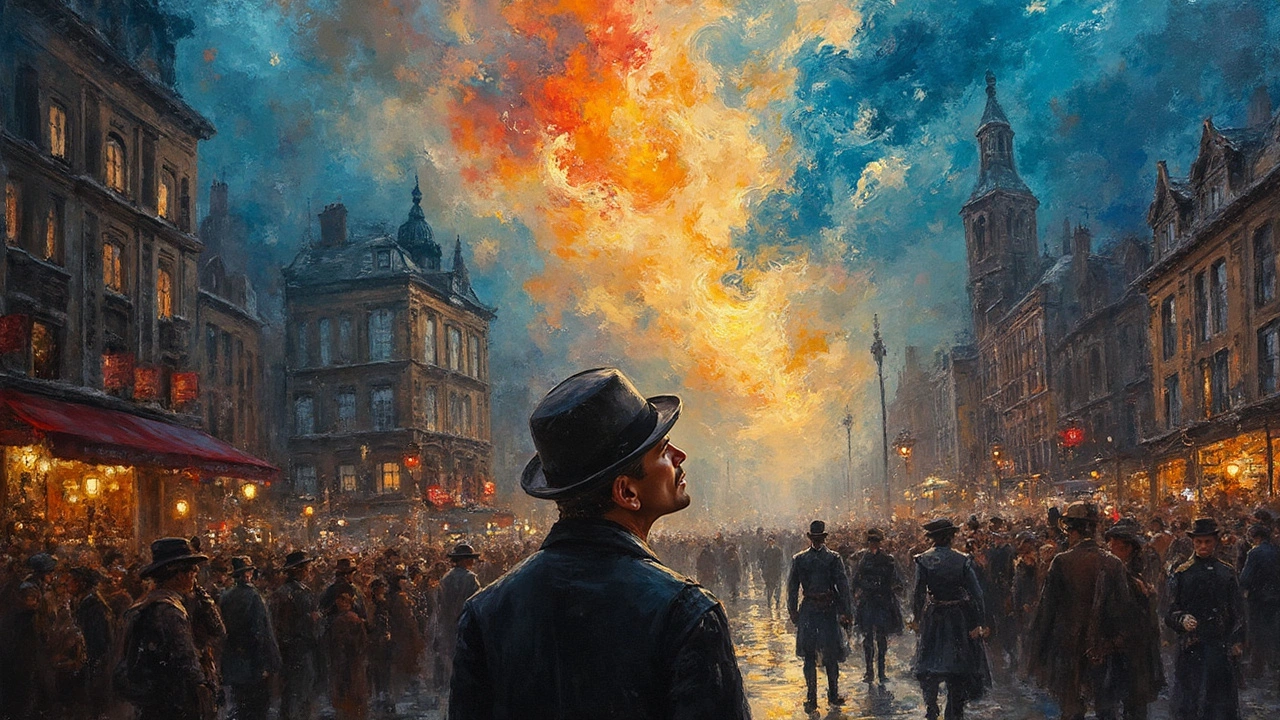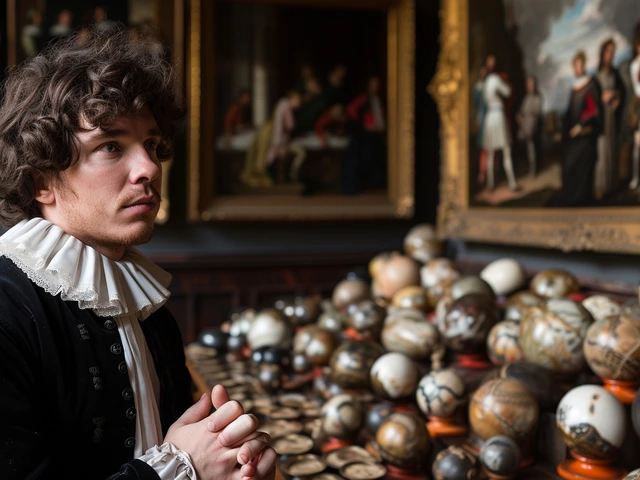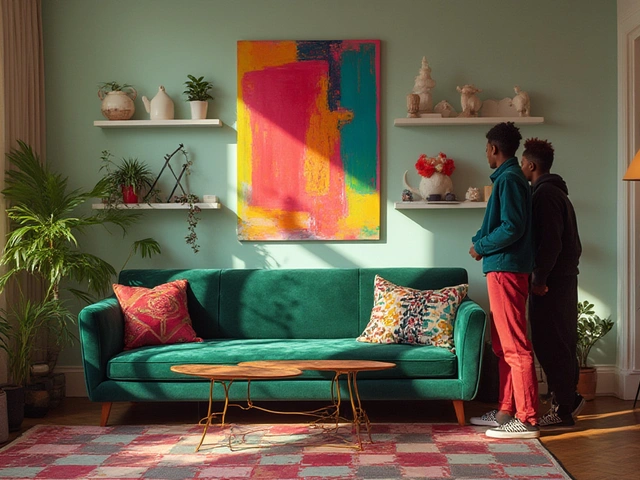Ever wondered why some paintings look like they’re screaming, not just hanging quietly on a wall? That’s no accident—it’s expressionism at work. Artists behind this movement weren’t interested in painting pretty landscapes or perfect portraits. They pushed paint around just to capture barely-controlled chaos. The goal was simple: make you feel something, even if it’s raw or uncomfortable.
Expressionism exploded in early 20th-century Europe, right when the world was going off the rails with new science, huge cities, and the build-up to war. Artists ditched the idea of reality as we see it. Instead, they painted what reality felt like. That means twisted faces, impossible colors, and scenes packed with drama. They wanted you to see what was happening inside their heads rather than outside the window.
It’s not just about brushstrokes or quirky colors, though. Expressionism is a total rejection of playing it safe. It’s about rebellion—against social norms, boring art traditions, and even politeness. If you’re tired of art that sits quietly in the corner, expressionism grabs you by the collar and won’t let go.
- Expressionism: Breaking the Mold
- Icons and Outcasts: Big Names and Untold Stories
- Emotion Over Perfection: What Makes Expressionism Tick
- How Expressionism Shapes Today’s Art Scene
Expressionism: Breaking the Mold
If you look at art before expressionism really caught on, most of it was about copying real life. Artists wanted things to look recognizable and neat, a bit like snapping a perfect photo with a camera. By the early 1900s, though, some artists decided enough was enough—they wanted art to show what people felt, not just what they saw. This was a huge turn. Imagine seeing a portrait where the sadness is painted just as loudly as the person’s face.
One thing that made expressionism stand out right away was its use of wild colors and bold lines. Artists like Edvard Munch (you probably know "The Scream") threw the usual rulebook out the window. Faces might be bright red, skies could be green, and buildings looked warped on purpose. These choices weren’t just random—they were meant to grab attention and show inner struggles.
If you check out groups like Die Brücke in Germany or artists in Austria’s Der Blaue Reiter, you’ll see how each group pushed things even further. They weren’t gathered in fancy studios, but met in living rooms, cafes, and crowded bars, bouncing wild ideas off each other. Die Brücke artists painted with crazy fast brushstrokes and didn’t care if things looked finished. They wanted raw emotion to stand out.
The influence of expressionism also went way beyond painting. Writers and theater folks jumped on board, creating plays and stories that were just as intense and edgy. You started seeing movies, especially German ones in the 1920s like "The Cabinet of Dr. Caligari," that used jagged sets, weird shadows, and off-kilter camera angles to give you that same off-balance feeling.
Why did artists break away from the old way of doing things? For one, the world was changing fast. There was anxiety about technology, politics, and what it meant to be human. Expressionists wanted art to shout, not mumble. The goal was to wake people up—to make them see the world, and themselves, in a very direct way.
- Expressionism tossed out safe techniques for bold experiments.
- Colors didn’t have to match reality—emotion led the way.
- It wasn’t about making things perfect, but making them honest.
- This movement inspired everything from books to movies—even fashion picked up on the wild designs.
It’s wild to think how quickly expressionism spread. A painting in Berlin could inspire a writer in Vienna or a filmmaker in Paris. The art world suddenly felt connected, raw, and definitely more exciting.
Icons and Outcasts: Big Names and Untold Stories
When people talk about expressionism, two names always shoot to the top: Edvard Munch and Egon Schiele. Munch—you know him from The Scream—was obsessed with showing anxiety and fear right on the canvas. He used weird, swirling lines and punchy colors to make viewers almost squirm. Schiele was a bit more in-your-face: his jagged figures looked uncomfortable on purpose, as if to remind us that feelings aren’t always pretty.
But there’s way more to expressionism than the usual suspects. Take Käthe Kollwitz, for instance. She poured her heartbreak and solidarity with working families into drawings and prints, becoming a symbol of empathy in German art. German groups like Die Brücke (“The Bridge”) and Der Blaue Reiter (“The Blue Rider”) were little gangs of artists—Kirchner and Kandinsky among them—who challenged each other to turn up the emotion, drop the realism, and let their freak flags fly.
Here’s a quick look at a few trailblazers and what made them influential:
- Edvard Munch – Norway’s biggest export after salmon. His work set the tone for what we call modern anxiety in art.
- Egon Schiele – Known for intense nudes and raw portraits, his tangled lines felt like scribbled nerves.
- Ernst Ludwig Kirchner – A Die Brücke founding member, he helped invent that bold, woodcut-style look everyone associates with German expressionism.
- Käthe Kollwitz – Her art was less about drama and more about deep, aching human stories, especially women and the poor.
- Wassily Kandinsky – His shift from representational to abstract painting showed that feelings mattered more than faithful images.
One surprising fact: despite its popularity today, expressionism was called "degenerate art" by the Nazis, who hated its anti-authority edge. Many artists had to flee or go underground, so lots of their stories stayed hidden until recent decades.
Just for fun, here’s how the gender split stacked up among some big movers in expressionism:
| Artist | Nationality | Known For |
|---|---|---|
| Edvard Munch | Norwegian | The Scream |
| Käthe Kollwitz | German | Printmaking, empathy |
| Ernst Ludwig Kirchner | German | Die Brücke, bold color |
| Gabriele Münter | German | Color-rich landscapes, Der Blaue Reiter |
| Wassily Kandinsky | Russian | Abstract, emotional color |
So if you think expressionism is just edgy faces and wild lines, think again. These artists were all about upending old art rules and telling human stories, loud and clear.

Emotion Over Perfection: What Makes Expressionism Tick
If you’ve ever stared at a modern art painting and thought, “I could do that,” you’re not alone. But trust me, with expressionism, it’s not about clean lines or perfect technique. It’s about packing in genuine emotional punch. Expressionists weren’t interested in impressing art snobs—they wanted to rattle your nerves and make you see the world through their anxious, sometimes angry, eyes.
The movement cranked up around 1905, when artists like Edvard Munch, Egon Schiele, and Ernst Ludwig Kirchner decided feelings mattered more than looking pretty. Take Munch’s “The Scream”—no one cares that the sky looks impossible or the figure has no clear features. What sticks is that gut-punch of panic and dread, right? That’s totally on purpose. It’s storytelling through color, line, and exaggeration instead of facts and accuracy.
So what’s really behind the artistic rebellion of expressionism?
- Artists used bold, often clashing colors on purpose—red for rage, blue for depression—letting color do more than fill space.
- Distorted faces or warped cityscapes showed inner feelings, not what things literally looked like.
- Brushwork was wild, fast, sometimes even sloppy, but that was the point—they wanted to give you a sense of urgency and energy.
Here’s something cool: early expressionism groups like Die Brücke (The Bridge) in Germany and Der Blaue Reiter (The Blue Rider) in Munich met regularly, swapping tips on how to ditch old habits and capture real emotions on the canvas. They treated their studios like labs for mental experiments. They’d even borrow ideas from folk art or non-Western cultures just to keep things raw and direct.
| Key Feature | Why It Matters |
|---|---|
| Rejecting Realism | Makes art relatable on a gut level, not just a visual one |
| Distorted Forms | Shows what's inside, not outside |
| Bold Colors | Colors represent moods, not objects |
| Visible Brushstrokes | Lets the artist’s emotions shine through every mark |
The fun part? You don’t need an art degree to spot expressionism. If the painting looks messy but honest, kind of weird but fascinating, and it makes you feel something weird (good or bad), it’s probably expressionist. So next time you see wonky cityscapes or weird haunted faces, remember: that mess is exactly what makes expressionism tick.
How Expressionism Shapes Today’s Art Scene
Expressionism never actually left. It just changed clothes. You still see those wild brushstrokes and bold colors popping up in places you might not expect. Take a scroll through Instagram or TikTok, and you’ll find artists showing off pieces that scream for attention, borrowing loads from the expressionism playbook.
Big names in the contemporary art world nod straight back to the movement. Artists like Cecily Brown and Jean-Michel Basquiat mixed chaos and emotion, ditching neatness for stuff that hits hard and feels real. These modern artists use expressionism not as a history lesson, but as a legit way to deal with messy, complicated feelings—just like the original gang did over a century ago.
That emotional punch? It shows up in more than just galleries. Street artists, graphic novel creators, and even video game designers lean on expressionism for bold visual stories. It’s everywhere you spot art that refuses to blend in or chill out.
Check this out—according to a 2023 survey from the Art Market Research Institute, nearly 45% of art buyers under 30 say they’re drawn to "emotionally-charged, expressive works" over photo-like realism. That’s a big shift from earlier decades when "realistic" blue-chip art was the safe bet for collectors.
| Expressionist Influences | Where You'll See It |
|---|---|
| Bold color and chaotic lines | Street murals, digital art |
| Intense emotional themes | Contemporary painting, graphic novels |
| Breaking art traditions | Video games, indie comics |
If you want to spot modern expressionism in action, look for works that ditch subtle and go straight for honesty. Artists aren’t scared to show anger, fear, or joy in ways that make you stop and really stare, whether it’s splattered across a giant canvas or squeezed into a square on your phone.




